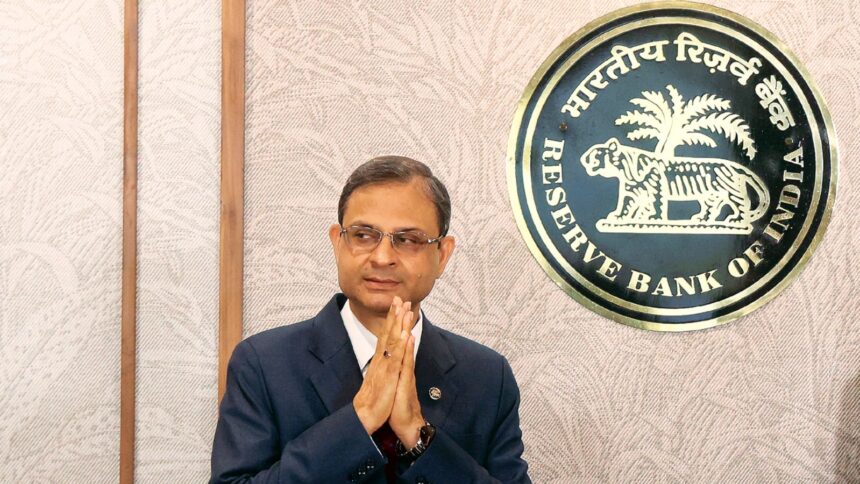The decline in crude oil prices amid heightened trade related uncertainties will ease pressure on domestic inflation, which is likely to align to the target during the current financial year (FY26), RBI Governor Sanjay Malhotra said at the Monetary Policy Committee (MPC) meeting held on April 7-9, the minutes released on Wednesday showed.
The government has mandated the MPC to maintain consumer price index (CPI) at 4 per cent within a band of +/- 2 per cent.
Malhotra said the imposition of tariffs will have two implications on inflation – On the upside, uncertainties may lead to possible currency pressures resulting in imported inflation, and on the downside, slowdown in global growth will further soften commodity and crude oil prices, which would ease the pressure on inflation.
“Overall, favourable factors for the inflation outlook outweigh those with possible adverse impact and should drive further disinflation in the headline CPI. It is expected that inflation will be well aligned to the target during the current financial year,” the RBI Governor wrote.
In the April meeting, the six-member MPC unanimously decided to reduce the repo rate by 25 basis points to 6 per cent and also decided to change the monetary policy stance from ‘neutral’ to ‘accommodative’. One basis point (bps) is one-hundredth of a percentage point. This was the second consecutive policy when the MPC had slashed the repo rate by 25 bps.
“When consumer price inflation is decisively around its target rate of 4 per cent and growth is still moderate and recovering, monetary policy needs to nurture domestic demand impulses to further increase the growth momentum,” Malhotra said.
The retail inflation, or CPI, declined to 3.3 per cent in March 2025 from 3.6 per cent in February, marking the fourth consecutive monthly decline and the lowest reading since August 2019.
The governor said the Indian economy remains relatively less exposed and better placed to withstand spillovers from global growth slowdown, with its growth driven largely by domestic demand.
“Nevertheless, we are not immune to the aftershocks and ripple effects associated with global disturbances,” he said.
MPC external member Saugata Bhattacharya said inflation in India is likely to remain moderate over FY26.
“This forecasted moderate inflation path opens up more space for “good news” policy easing,” he said
He, however, said if the trade tariff actions are not significantly diluted – global trade and hence growth will slow down materially, likely spilling over into India via external channels, further decelerating India’s growth.
RBI’s Deputy Governor M Rajeshwar Rao said while the exact impact of US tariffs on India is not certain, with the US being India’s largest export destination, it could weigh on trade, financial markets, and domestic economic activity through both direct and indirect channels.
“Assessing the overall situation, we find that while inflation outlook remains benign, GDP growth could face a downward pressure. The recent waves of global uncertainty demand decisive policy support to growth,” said Rao.
MPC member and the RBI’s Executive Director Rajiv Ranjan said even as India remains essentially domestic demand driven, the drag to growth may come from the global front, through lower external sector contribution and high investment uncertainty.
MPC’s external member Ram Singh said though the outlook for food inflation has turned decisively positive, concerns about lingering global market uncertainties and the recurrence of adverse weather-related supply disruptions pose upside risks to the inflation trajectory.
Another MPC member Nagesh Kumar said there is a need to remain watchful regarding the evolving global scenario and its impact on India’s growth outlook.








